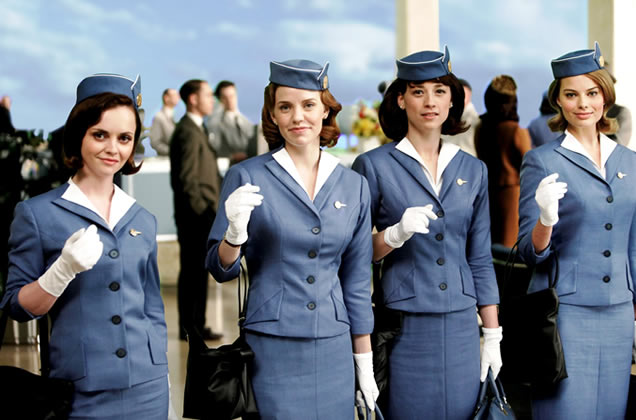“Come on, fly with me, let’s take off in the blue”. Frank Sinatra’s smooth serenade is nearly impossible to resist. “We’ll just glide, starry-eyed”. He easily persuades you to pack your bags and become an international jet setter at the drop of a hat. “Come fly with me, let’s fly, let’s fly away”.
Sinatra’s 1958 hit embodies the glamorous notion of the jet age’s golden days, as they are called: those early days of jet planes when travelling by air was an event of sorts, not a tedious exercise or some test of patience and endurance as it can often be today. People travelled in style: they dressed well, in suits and skirts, with their colour coordinated luggage sets in hand. Stewardesses (not “flight attendants”) dressed in tailored uniforms topped with pillbox hats and served elegant meals to passengers who had plenty of leg room and a first class experience no matter their seat number.
It’s easy to romanticise the past, to wax nostalgic on a time gone by and to long for the elegant combination of a simpler lifestyle lived with a more sophisticated air. Those golden days of the jet age are no exception, especially when compared to the turbulence that has surrounded the airline industry more recently: the fees, the security lines, the in-flight service (or lack thereof).
It’s undeniable that there was an air of glamour during the early decades of air travel. Sinatra seemed to think so, so it must be true, right? Some planes featured lounges and piano bars, so it’s not difficult to create a mental image of Ol’ Blue Eyes himself surrounded by the likes of Ava Gardner and the rest of the Rat Pack, crooning as he soared through the clouds.
Although jet engines were invented and improved during the 1930s and 1940s, their use was limited to military aviation, and they weren’t introduced for commercial flight until the early 1950s. The De Havilland Comet 1 made the first jet airliner flight between London and Johannesburg, South Africa, on 2 May 1952.
However, flights were expensive. A single fare ticket for the Comet 1 flight to Johannesburg was £175 and a return was £315, according to the BBC’s On This Day. Now, adjust those figures for inflation: £175 becomes nearly £4,400 (that’s just over €5,400); £315 is hiked up to about £7,900 (over €9,700). The result, then, was a cabin predominately occupied by white businessmen during the early decades of the jet age.
It wasn’t until the 1960s and 1970s that cross-country and trans-Atlantic travel became more easily accessible to families and the less affluent. Jumbo jets in the 1970s allowed more passengers to travel and reduced the cost of air travel as a result, making the transportation method less exclusive. According to the Smithsonian National Air and Space Museum website, passenger numbers in America more than quadrupled between 1955 and 1972 with the falling fares.
The bright side of the more expensive flights, though, was the service passengers received in return, and it is typically memories of this high-quality service that make the modern traveller reflect wistfully on the air travel of the past.
Stewardesses would attend training schools, which reflected finishing schools, to some degree, and where they would be instructed in charm, entertainment and cooking. Ann Hood, now an American novelist and short story writer, worked as a Trans World Airlines flight attendant during the late 70s and 80s. Although her time working in the air wasn’t until after travel had expanded to a wider range of people, her experiences as a flight attendant still matched more closely with the early decades of the stewardesses than the contemporary in-flight experience.
On her blog, she fondly recalls her time at TWA’s Breech Training Academy in Kansas City, Missouri: “We had to wear high heels. We had our hems measured and the dangle of our earrings. We learned how to pack a suitcase, calm a crying baby, open a wine bottle and cook chateaubriand to order”.
Perhaps it is true that the early days of the jet age truly were golden and that we’ve descended into an era of turbulent civilian aviation. But, as with everything, it is a give and take. Today, we may have to pay a little extra for another bag, and we certainly aren’t treated like Ol’ Blue Eyes, but we are paying relatively less and arriving more quickly and more safely at our destinations. Plus, more of the world is available to us than it was during the supposed golden age of flying.
Despite the security lines and the fees, there is still a certain air of excitement when we board that plane and take off into the blue. But if the arm rest of your too-small seat is digging into your side, your too-expensive beverage of choice is already gone and the sound of crying children gets to be too much, slip on some headphones, close your eyes and fly away on dreams of a golden past as Sinatra soars with you into the clouds.







